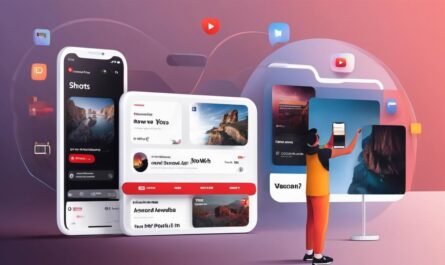In digital marketing, mastering social media management is no trivial task. Understanding your target audience, maintaining consistent branding, tracking and analyzing performance, engaging your audience, and leveraging the power of visual content are pivotal cogs in the wheel of efficient social media strategy. However, numerous pitfalls can cripple your efforts and sabotage your online campaign if you are not cautious. This paper emphasizes recognizing these common mistakes and how they could spell doom for your digital marketing crusade. The objective is to aid you in navigating these complex waters and steering your brand to digital success.
Understanding the Audience
In the rapidly evolving field of social media management, one of the most crucial factors determining the success or failure of a campaign is how well the target audience is understood. Yet, there’s a myriad of mistakes that many fall prey to in this endeavor. Dissecting these common pitfalls can be an enlightening exercise in strengthening social media strategies.
First off, the phrase ‘target audience’ is not one size fits all— and that’s where many stumble. Casting too wide a net in the quest to get ‘maximum exposure’ can, paradoxically, result in minimal impact. Instead, narrowing down the demographic and focusing on who exactly the content is intended for will yield much better results.
Another frequent miscalculation is assuming the target audience’s preferences, needs, or online behavior based on stereotypes instead of data. Relying on personal presumptions can result in a skewed understanding. Use analytics tools, run surveys, and gather factual data to ascertain what resonates specifically with your audience.
Equally detrimental is disregarding audience feedback. Social media is all about interaction. Comments, likes, shares, tweets—they’re the modern Pandora’s box of customer insights. Neglecting these valuable metrics stifles the opportunity for growth and development.
Also, bear in mind that the flurry of technology and social platforms can be head-spinning. Each social media platform has its specific audience type. Misalignment of platform and audience is a common slip-up. For instance, posting animated content on LinkedIn, which is primarily a professional network, may not yield the desired results.
The ever-evolving nature of social media is another factor that can trip up many. Stale strategies can stale results. What worked yesterday may not work today. Keeping your social media strategies agile and adaptable to emerging trends can prevent your brand from falling into the trap of irrelevance.
Finally, don’t underestimate the power of your competition. Observing their strategies, successes, and failures can provide crucial insights. Avoid the blunder of navigating this social media jungle without often checking the compass of your competitor’s actions.
In conclusion, comprehending the target audience in social media management calls for careful planning, a data-driven approach, intelligent utilization of audience feedback, keen observation, and adaptability to changing trends. Avoiding these common mistakes is not just about dodging problems. It’s about unlocking potential, about paving the road to sustainable, meaningful connections with your audience through the power of social media.

Lack of Consistent Branding
In the dynamic landscape of digital marketing, effective social media management is critical for brand image and growth. However, even the savviest of tech enthusiasts can stumble upon one common pitfall– inconsistent branding.
Why is brand consistency critical? It’s simple. Consistency helps build brand recall – an essential ingredient that helps any brand stand out in the crowded digital space. Pay heed to those tech wizards who preach the importance of uniformity across all social platforms. An inconsistent brand image can create confusion, erode trust, and dilute the brand’s impact. Essentially, it’s like handing over a broken compass to your valuable customers in the never-ending digital jungle. But let’s talk more practically and examine how to sidestep this hiccup.
Firstly, maintain a recognisable presence across platforms. This goes beyond just having the same profile picture or logo. Think fonts, colors, imagery, tone of voice – these contribute to an overall aesthetic that should resonate with your brand’s values and mission. It’s the first line of code in establishing your brand’s persona online.
Secondly, uphold a consistent posting schedule. It’s the equivalent of an app update; it keeps your audience engaged and looking forward to what’s coming next. Adopt tech tools that enable you to schedule posts and optimize posting times based on audience behavior. Apps like Buffer, Hootsuite, and Sprout Social can be your tech comrades for this cause.
Next, curate uniform content themes. Much as we’d like to believe that content is king, context is the throne the king sits on. Ensure that your content theme aligns with your brand’s ethos, regardless of the platform. A fitness brand posting random cat videos, amused as your audience might be, would result in a brand disconnect.
Fourth, understand the language of each platform. Be it a 280 character tweet or a ten-minute YouTube tutorial; a keen eye must be kept on presenting unified messaging across the playfield.
Lastly, employ consistent responses to customer interactions. Inconsistencies in communication can push some serious code errors into your brand’s algorithm. Automate responses where you can, however, never compromise on empathy and a human touch.
The tech-savvy social media manager’s weapon? Consistent branding. So the next time you find your brand’s social media strategy veering off-course, remember – consistency is not merely a strategy; it’s a brand’s code of conduct for successful social media management. Navigate wisely!

Not Tracking or Analyzing Performance
While we’ve already established the importance of knowing and understanding your audience, ensuring adaptability to trends, and maintaining consistent branding for a successful social media presence, one element that could often be overlooked is performance analyses. Not taking into account regular monitoring and scrutiny of your social media metrics can be tantamount to stepping into the darkness blindly; a disastrous move in social media management.
The age of digital reliance has ushered in a culture of instant gratification and fast-paced data generation. This makes social media an arena of immediate and vast amount of feedback, either about your audience or your strategies. By ignoring the performance analyses of your social media channels, you are discounting invaluable information that can be used for formulating optimal strategies.
Performance analytics are tools that throw light onto the effectivity of your social media strategies. They provide you with critical insights into post engagement rates, audience demographics, and the kind of content your followers gravitate toward. Not only does this data help evaluate the success of past campaigns, it guides towards successful future ones.
Imagine running a marketing campaign without defining clear goals or without a means to measure its achievement. This is what ignoring performance analyses is akin to. Arming yourself with data-backed insights can be the difference between simply existing on social media and truly thriving on it.
In a fast-paced environment like social media where every post counts, time is of the essence. Ignoring performance analytics means you’re not making the best use of your time. Knowing which type of content works, when to post it, and who to target can save countless hours that can be better leveraged to enhance other aspects of your business.
Having the finest quality content, visually stunning graphics or massive follower base amounts to nothing if there’s no engagement. Failure to analyse performance could blindside you to declining engagement rates. By monitoring post interactions, shares, comments or likes, you can act quickly, tweaking your strategies to arrest any negative trend.
In conclusion, neglecting performance analyses in social media management severely hampers your ability to strategize and adapt your digital marketing efforts for success. As tech enthusiasts and early adopters of cutting-edge strategies, let’s harness the power of performance analytics to drive our social media management and stay ahead of the digital curve. There’s nothing quite as disastrous in this arena as ignoring the numbers that speak volumes about your performance. After all, in the digital age, data is the ultimate game-changer.

Photo by lukechesser on Unsplash
Ignoring the Art of Engagement
Sidestepping user engagement on social media platforms can mar the reputation of businesses in digital spaces. It won’t be an overstatement to say that a business’s social media management plan can fall flat if they fail to acknowledge the significance of audience interaction. Direct and personal communication with potential and existing customers shows them they’re valued, which in turn strengthens their loyalty and trust in a brand.
It’s crucial to remember that social media, at the core, is a platform for dialogue rather than a one-way communication tool. If businesses treat social media solely as a broadcasting platform, they lose out on the intimacy and relationship-building aspects, essential for fostering a strong connection with the audience. Furthermore, failing to engage with the audience can signal disinterest and disconnection, which can negatively influence a brand’s image.
Given the fast-paced nature of social media, overlooking engagement by not responding promptly to comments, questions, or complaints may also result in missed opportunities and potential business losses. Hence, investing time and effort into audience engagement can yield healthy returns and a competitive edge in the dynamic market scene.
So, how can technology assist in this aspect? The answer lies in the use of social media management tools which are, essentially, a tech enthusiast’s dream. These tools assist in streamlining and automating social media activities, enabling businesses to stay on top of their game.
By bringing all social media platforms under a single umbrella, these tools save time, optimize efforts, and make it possible to monitor and respond to all audience activities rapidly. Tools like Hootsuite, Buffer, or Sprout Social allow scheduling posts, track conversations and keywords, and measure performance across multiple networks.
Artificial Intelligence (AI) and Machine Learning (ML) can also facilitate proactive audience interaction. Smart chatbots, for instance, can handle preliminary customer inquiries and redirect them to a human agent when necessary. AI algorithms can predict user behavior, enabling businesses to tailor their content strategy to audience preferences.
In the age of data abundance, sentiment analysis tools can help understand an audience’s feelings towards a brand by analyzing public opinions on social media. Consequently, businesses can adjust their social media strategies based on audience sentiment, ensuring good public relations and brand image.
Technology has immensely reframed social media management, pixelating the line between humans and robotics in customer engagement. It is, therefore, perilous for businesses to sideline audience engagement in their social media strategy. By leveraging technology, they can drive successful, data-backed engagement strategies, staying adaptable, relevant, and ahead in the digital era.

Misestimating the Power of Visual Content
Now, switching gears, let’s delve into the triumphant power of visual content. Visual content is an indomitable force in social media management, a proven factor that can majorly gear engagement levels up. A picture, as cliche as it may sound, is indeed worth a thousand words, especially when recognizing its profound potential for sparking emotions and reactions.
Think infographics, memes, illustrations, images, videos or live streams – all these elements possess the power to deliver more ‘oomph’ to your message. No longer does an audience have the tolerance or time to sift through monotonous, long-winded text on social networks. The instant gratification generation thirsts for eye-catching visuals which instantly grab attention amidst the endless feed scroll.
It is not simply about throwing haphazard visuals around. What’s essential is the strategic use of visual content, inclusive of the three C’s – Clear, Concise, and Compelling. It also needs to align with the brand’s tone, imaging, and, paramountly, the target demographic’s preferences.
A post which merges relevant and captivating visuals with captivating content can witness considerably higher levels of engagement. The byproduct? Increased shares, likes, and comments, and a ripple effect leading to a larger reach. Evidence is in the statistics – studies have found that Twitter posts with images see 150% more retweets than those without.
Visual content is also a boon for improving information retention, another critical facet in the social media arena. When text and visuals coalesce, the message is not just more enjoyable but also easier to remember. People recollect 65% of information paired with an image, three days later, compared to a mere 10% for text alone. Enhanced memory recall can lead to better brand recognition and potential conversion.
Owing to the technology advancement and the widespread use of smartphones, not only has producing visual content become increasingly accessible, but so has consumption, with apps like Instagram and Pinterest that are wholly centric to visual content.
Another notable reason to prioritize visual content stems from its algorithmic favoritism. Social media platforms like Facebook, Instagram, and LinkedIn have algorithms that tend to favor visual content and reward them with better reach and visibility.
Stay one step ahead by understanding the intricate correlation between visual content and SEO too. With relevant alt-texts, image captions, and filenames, your visual content can boost search engine rankings, leading to improved online visibility.
Investing in high-quality, tailored visual content is not an option but a necessity for social media managers. It enhances your ability to connect deeper with your audience, makes your brand more memorable, improves engagement rates, and could lead to a higher return on investment. Let’s not forget, the task of managing social media is all about grabbing and retaining attention amongst the digital noise – and what better weapon than engaging visual content to attain this objective.

The digital marketing landscape is as dynamic as it is intriguing, and social media management sits at its core. Avoiding these commonly overlooked mistakes— a lack of audience understanding, brand inconsistency, failure to track performances, neglecting engagement, and underestimating visual content—can significantly fortify your online campaigns. By remaining vigilant in these areas, harnessing the full potential of available technologies, and taking a data-driven approach, you not only safeguard your brand’s credibility but also set the stage for a thriving and productive interaction with your audience on the digital platform. Let’s embrace these learnings and march forward on our journey to successful and effective social media management.




